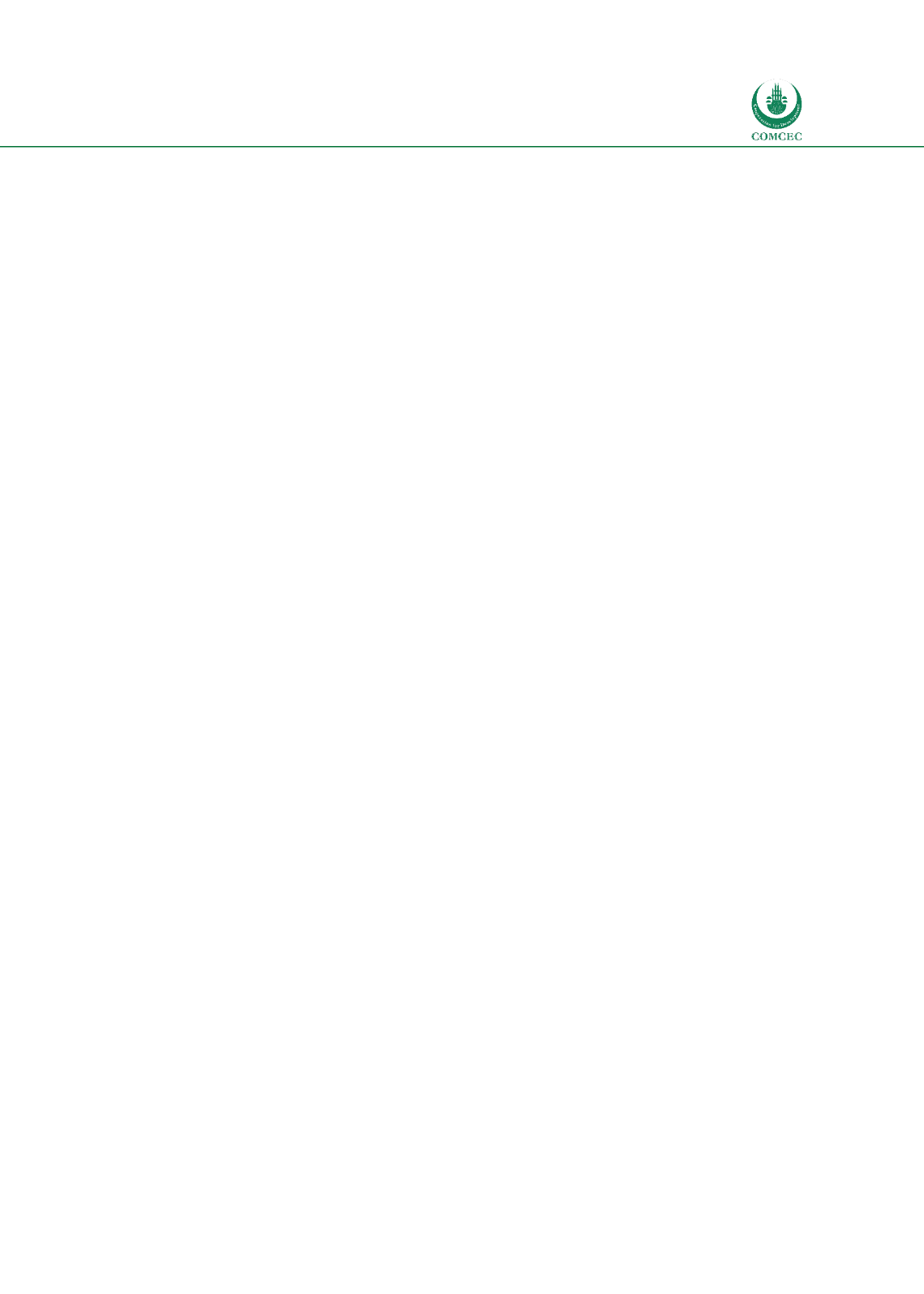

National and Global Islamic Financial Architecture:
Prolems and Possible Solutions for the OIC Member Countries
73
Indonesia, OJK, Indonesian Deposit Insurance Corporation (LPS), Ministry of Finance, National
Sharia Board (DSN), State Ministry of National Development Planning (Bappenas), Ministry of
Religion, Ministry of State Owned Enterprise, Ministry of Cooperatives and Small and Medium
Enterprise, and Ministry of Economic Coordination. Finally, the KNKS will be responsible to
integrate and coordinate comprehensive policies on Islamic economics and finance at the
national level.
4.3.1. Legal Infrastructure
Supporting Islamic Finance Laws
The legal foundation of Islamic finance was laid out in 1992 with the passage of the Banking
Act Number 7, 1992 by the parliament that enabled the implementation of dual (conventional
and Islamic) banking systems. The act endorsed the unique operations of Islamic banking by
clearly mentioning “profit sharing” banks. This legal infrastructure continued to develop with
the amendment of the banking act of 1992 with Act Number 10, 1998 that allowed the
conversion of conventional banks to Islamic and also permitting conventional banks to
establish Islamic banking units (UUS). The legal framework of Islamic banking was further
strengthened by Islamic Banking Act Number 21, 2008 which provided a comprehensive legal
basis to support the growth of the Islamic banking industry and also reflected the strong
political will of the government and regulators to support Islamic finance. The Insurance Act
Number 40 2014 governs the whole insurance industry. As there is no specific law concerning
takaful
, the sector is regulated similar to the conventional one using the provisions of the
articles of the Insurance Act.
While a state owned communication company (Indosat) issued a
mudarabah
-based corporate
sukuk
to finance its project in 2002, the legal foundations for
sukuk
instruments, market and
transactions were laid with
Sukuk
Act Number 19, 2008. Thereafter, the government issued the
first Islamic Fixed Rate (IFR)
Sukuk
in the domestic market in 2008 that was followed by a
Retail
Sukuk
(SR), Indonesian National
Sukuk
(SNI), or Indonesian global
Sukuk
and Pilgrimage
Sukuk
in 2009. The Islamic Treasury Notes (SPN-S) were issued in 2011 and finally a Project
Based
Sukuk
(PBS) was issued in 2012 (Ministry of Finance, 2015). More recently, Garuda
Indonesia, another state owned company successfully issued its global
Sukuk
in 2015 and
raised at least USD2 billion funds from the market.
Besides the Islamic banking and
sukuk
acts, the Central Bank Act Number 23, 1999 formally
permits the application of the Islamic monetary policy, Islamic monetary operations and
Islamic monetary instruments. Accordingly, Bank Indonesia, the central bank of the country,
has issued Bank Indonesia Islamic Certificate (SBIS) (Bank Indonesia, 2008a) and Bank
Indonesia Islamic Funding Facilities (FASBIS) (Bank Indonesia, 2009) as its Islamic monetary
instruments.
As indicated, Indonesia has a diversified financial sector with a large microfinance industry
component. The Microfinance Act Number 20, 2008 and Microfinance Institution Act Number
1, 2013 were enacted to strengthen the microfinance sector and are applicable to both
conventional and Islamic microfinance institutions. These acts provide microfinance
businesses a strong legal foundation to operate and function as financing providers serving
micro and small business entities. In particular, they specify the criteria, activities, principles
















